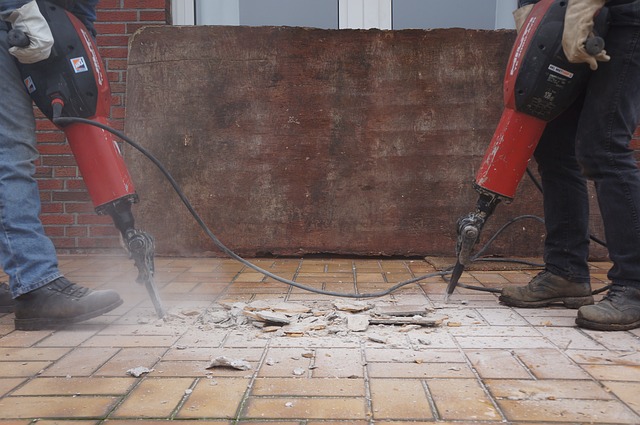A Comprehensive Guide to Demolition Risk Assessment
November 4, 2024

Risk assessment can help a demolition project be completed efficiently. Understanding risk factors related to the project and formulating a proper plan can protect workers and others involved. Whether you are a contractor or a client, a comprehensive guide to demolition risk assessment can be useful. We shall provide a step-by-step guide to make your demolition project risk-free and ensure the safety of workers.
What are the risks of a demolition project?
Risks in a demolition project can be different. The building may be old and weak and can collapse at any time; the dust from the demolition work may contain harmful elements like asbestos, and large or small debris from the site can harm people. Risk assessment for the site is also required to identify if the building has harmful chemicals, if there is leakage in the gas line, or whether the electrical line is faultless. The workers' safety is paramount in this regard. Wood dust or asbestos dust clouds can harm their lungs, while large chunks of concrete can injure them physically. A skillful and qualified demolition contractor can relieve you from worries by formulating an efficient risk assessment plan. All the possible risk factors are considered to minimise the risk of the demolition work.
What are the steps of demolition risk assessment?
The risk assessment task for a demolition site involves different stages that help to identify and mitigate risk factors. These steps include assessing the site, identifying other risk factors, maintaining clear communication with all stakeholders, and determining control measures for the identified risks.
Site assessment and analysis
The first step of demolition risk assessment is to conduct a site assessment and analysis of the structure. Demolition contractors can use drone technology to gain a more precise site view. Modern drone technology can provide a picture of the risky or unreachable areas of the building to be demolished. Expert engineers and your demolition contractor will be able to assess the present condition of the building and determine if a top-down demolition or explosive demolition is suitable. Site assessment and analysis can identify these factors if the site contains hazardous elements like asbestos, harmful chemicals, contaminated syringes, etc. It also helps to plan for safeguarding neighbors during the demolition of the building.
Identification of risk factors
In the second stage, possible risk factors can be identified. For example, an asbestos cloud can harm workers and neighboring individuals if the site has asbestos. If the site contains harmful chemicals, then it can harm workers. Thus, these hazardous elements require proper planning for safe removal from the site. The Health and Safety Executives of the UK provide guidelines to safeguard construction workers from electricity, cement, dust, chemicals, etc. Identifying any possible risk factors makes the demolition process more efficient and effective.
Communication with stakeholders
Identifying risk factors and determining a mitigation strategy is insufficient; communication with all stakeholders is essential to mitigate risks successfully. If you are the site owner, you should ensure that local government authorities are informed and given permission to do the demolition work. According to the law, the contractor must ensure the employees' safety. The demolition contractor should communicate with his workers to ensure they understand the nature of the risk involved in the process. The contractor should also train the workers to keep them safe if required.
Defining control measures
After determining the risk factors associated with the project, the contractor should evaluate control measures. The workers should wear protective masks if the process will likely generate concrete dust. These masks can also protect workers from asbestos-like carcinogenic elements. Risk alert signs should be used to make others aware of the demolition site and its dangers. Construction tools like excavators, jackhammers, and DustBoss-like equipment can make the process dust-free and efficient. Modern tools also can complete the work without producing noise. It reduces noise pollution and does not affect neighbours.
Conclusion
Demolition work can only be completed if the contractor performs a proper risk assessment. You should also ensure that the contractor follows specific steps to conduct the demolition process. The contractor must identify risk factors associated with the process and take necessary steps to resolve them before the work begins. At Demolition Contractor London, we offer various demolition services to satisfy our clients. Our ability to consider small- to large-scale demolition work makes us a reliable contractor you can rely on. Contact us today for a free and personalised quote.
Recent Blogs
- On-site Concrete Crushing: A Sustainable Way to Manage Concrete Waste
- What Is Hydrodemolition and Why Is It Gaining Popularity in the UK?
- Why You Need an Asbestos Survey Before Demolishing a Building in the UK
- Managing Noise and Dust: Environmental Considerations in Demolition
- Top 7 Signs to Know It's Time to Demolish Your Old Building